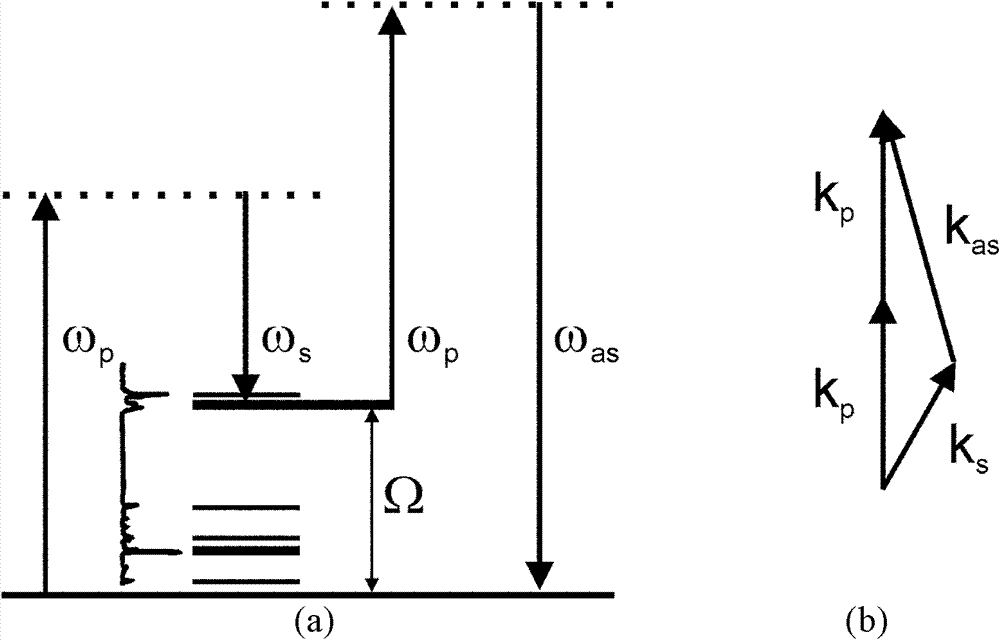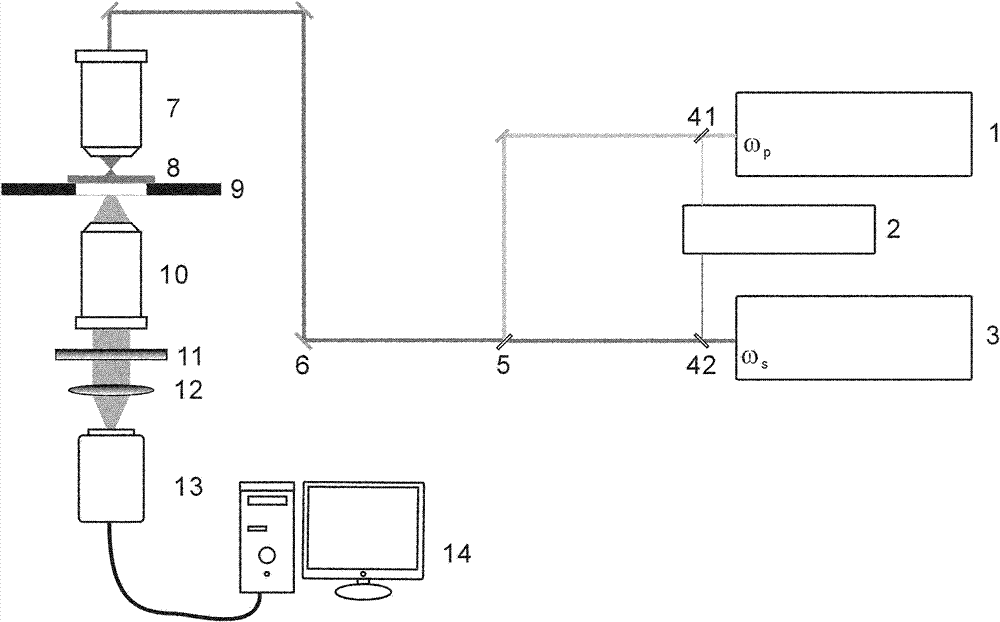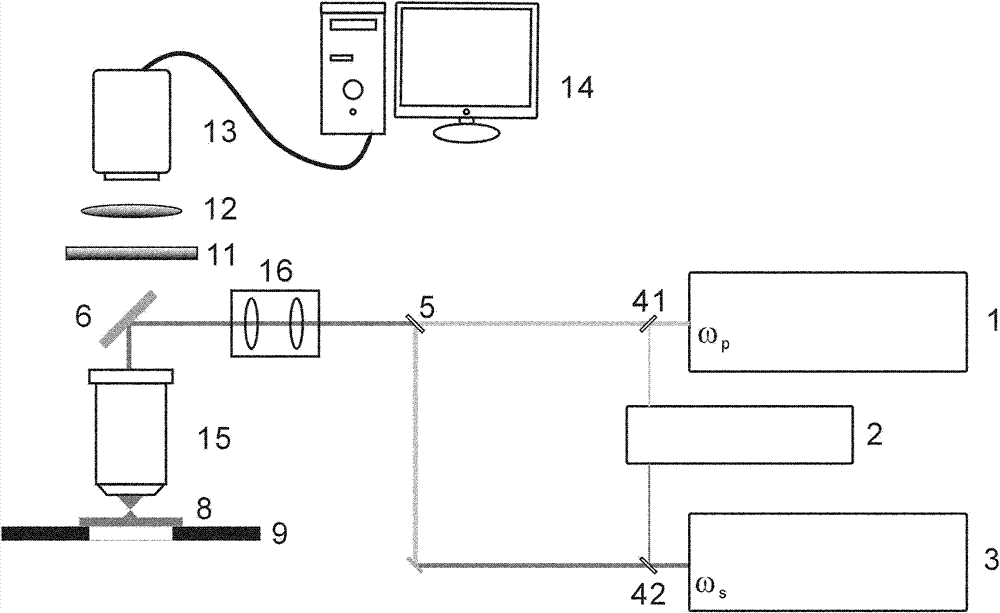High-speed WFOV (wide field of view) CARS (coherent anti-stokes raman scattering) microscope system and method
A microscopic system and wide field of view technology, applied in microscopes, optics, instruments, etc., can solve the problems of slow imaging speed and photodamage of living biological tissues, and achieve the effect of small photodamage, fast speed and low energy density of samples
- Summary
- Abstract
- Description
- Claims
- Application Information
AI Technical Summary
Problems solved by technology
Method used
Image
Examples
Embodiment 1
[0062] Figure 4 It is the CARS imaging experiment of the device of the present invention on C. elegans nematode eggs. In the experiment, the focusing objective lens is a 10X microscopic objective lens, NA=0.4, the detection objective lens is a 40X microscopic objective lens, NA=0.85, and the scale is 10 μm. The pump light laser is a Ti:Sapphire laser with a pulse width of 3 ps, a repetition rate of 76 MHz, and a wavelength of 700- 980nm adjustable. The OPO laser is used as the Stokes laser, the pulse width is 6ps, the repetition frequency is 76MHz, and the wavelength is adjustable from 680-990nm. During the experiment, the wavelength difference of the two lasers was adjusted to match the CH of the fat molecule. 2 Bond resonance, resonance frequency 2850cm -1 . The cell membrane of the C. elegans nematode egg and the adipose tissue inside can be clearly observed. The image contrast is high, and the EMCCD exposure time is 0.5 seconds.
Embodiment 2
[0064] Figure 5It is the experimental result of moving a polystyrene ball with a diameter of 6 μm in water and performing CARS imaging. In the experiment, the focusing objective lens is a 10X microscopic objective lens, NA=0.4, the detection objective lens is a 40X microscopic objective lens, NA=0.85, and the scale is 10 μm. The pump light laser is a Ti:Sapphire laser with a pulse width of 3 ps, a repetition rate of 76 MHz, and a wavelength of 700- 980nm adjustable. The OPO laser is used as the Stokes laser, the pulse width is 6ps, the repetition frequency is 76MHz, and the wavelength is adjustable from 680-990nm. During the experiment, the wavelength difference between the two lasers was adjusted to make it resonate with the CH bond of the polystyrene molecule, and the resonance frequency was 3050cm -1 . The dynamic process of moving polystyrene pellets in water can be clearly observed. The image acquisition rate of 33fps can be realized. The present invention is fully ...
PUM
| Property | Measurement | Unit |
|---|---|---|
| diameter | aaaaa | aaaaa |
Abstract
Description
Claims
Application Information
 Login to View More
Login to View More - R&D
- Intellectual Property
- Life Sciences
- Materials
- Tech Scout
- Unparalleled Data Quality
- Higher Quality Content
- 60% Fewer Hallucinations
Browse by: Latest US Patents, China's latest patents, Technical Efficacy Thesaurus, Application Domain, Technology Topic, Popular Technical Reports.
© 2025 PatSnap. All rights reserved.Legal|Privacy policy|Modern Slavery Act Transparency Statement|Sitemap|About US| Contact US: help@patsnap.com



